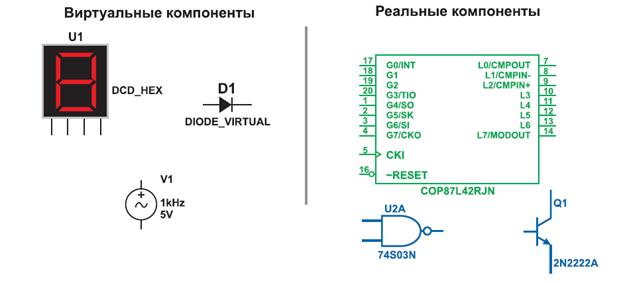Properties of Oil
Chemical composition. Hydrocarbon content. Although oil consists basically of compounds of only two elements, carbon and hydrogen, these elements form a large variety of complex molecular structures. Regardless of physical or chemical variations, however, almost all crude oil ranges from 82 to 87% carbon by weight and 12 to 15% hydrogen. More viscous bitumens generally vary from 80 to 85% carbon and from 8 to 11% hydrogen. Crude oil can be grouped into three basic chemical series: paraffins, naphthenes, and aromatics. Most crude oils are mixtures of these three series in various and seemingly endless proportions. No two crude oils from different sources are completely identical. The paraffin series of hydrocarbons, also called the methane series, comprises the most common hydrocarbons in crude oil. It is a saturated straight-chain series that has the general formula CnH2n+2, in which C is carbon, H is hydrogen, and n is an integer. The paraffins that are liquid at normal temperatures but boil between 40° and 200° C are the major constituents of gasoline. The residues obtained by refining lower-density paraffins are both plastic and solid paraffin waxes. The naphthene series has the general formula CnH2n and is a saturated closed-ring series. This series is an important part of all liquid refinery products, but it also forms most of the complex residues from the higher boiling-point ranges. For this reason, the series is generally heavier. The residue of the refinery process is an asphalt, and the crude oils in which this series predominates are called asphalt-base crudes. Nonhydrocarbon content. In addition to the practically infinite mixtures of hydrocarbon compounds that form crude oil, sulfur, nitrogen, and oxygen are usually present in small but often important quantities. Sulfur is the third most abundant atomic constituent of crude oils. It is present in the medium and heavy fractions of crude oils. In the low and medium molecular ranges, sulfur is associated only with carbon and hydrogen, while in the heavier fractions it is frequently incorporated in the large poly-cyclic molecules that also contain nitrogen and oxygen. The total sulfur in crude oil varies from below 0.05% (by weight), as in some Pennsylvania oils, to about 2% for average Middle Eastern crudes and up to 5% or more in heavy Mexican or Mississippi oils. Generally, the higher the specific gravity of the crude oil, the greater is its sulfur content. The excess sulfur is removed from crude oil during refining, because sulfur oxides released into the atmosphere during the combustion of oil would constitute a major pollutant. The oxygen content of crude oil is usually less than 2% by weight and is present as part of the heavier hydrocarbon compounds in most cases. For this reason, the heavier oils contain the most oxygen. Nitrogen is present in almost all crude oils, usually in quantities of less than 0.1% by weight. Sodium chloride also occurs in most crudes and is usually removed like sulfur. Many metallic elements are found in crude oils, including most of those that occur in seawater. This is probably due to the close association between seawater and the organic forms from which oil is generated. Among the most common metallic elements in oil are vanadium and nickel, which apparently occur in organic combinations as they do in living plants and animals. Crude oil also may contain a small amount of decay-resistant organic remains, such as siliceous skeletal fragments, wood, spores, resins, coal, and various other remnants of former life. Physical properties Oil consists of a closely related series of complex hydrocarbon compounds that range from gasoline to heavy solids. The various mixtures that constitute crude oil can be separated by distillation under increasing temperatures into such components as gasoline, kerosene, gas oil, lubricating oil, residual fuel oil, bitumen, and paraffin.
Exercise 17. Answer the following questions. 1. What are the main two elements of oil? 2. What is percentage proportion of carbon and hydrogen in crude oil? 3. What chemical series can crude oil be grouped into? 4. What does the paraffin series of hydrocarbon comprise? 5. What are the main constituents of gasoline? 6. What can you tell about naphthene series? 7. What is the third most abundant atomic constituent of crude oil? 8. What does the sulfur content in oil depend on? 9. What other elements can be found in crude oil? 10. What are physical properties of oil?
Exercise 18. Some words have different meanings. Circle the word with the closest meaning to the underlined word. 1. The oxygen content of crude oil is usually less than 2% by weight. a) meaning c) volume b) proportion d) capacity 2. Oil consists of closely related series of complex hydrocarbon compounds. a) complicated c) hard b) difficult d) composite 3. The excess sulfur is removed from crude oil during refining. a) is moved c) is departed b) is eliminated d) is transferred
Exercise 19. Put the following sentences into Passive Voice. 1. They have grouped crude oil into three chemical series. 2. They obtain the residues by refining lower-density paraffins. 3. They can remove the excess sulfur from crude oil during refining. 4. They also call the paraffin series of hydrocarbons the methane series.
Exercise 20. Put questions to the underlined words. 1. Crude oil is grouped into three basic chemical series. 2. The paraffin series of hydrocarbons comprises the most common hydrocarbons in crude oil. 3. Sodium chloride also occurs in most crudes. 4. Crude oil may contain a small amount of decay-resistant organic remains.
Exercise 21. Look back into the text and find synonyms for the following words. 1. asphalt 2. prevalent 3. to include 4. component, element 5. combination, blend, mixing 6. main
Exercise 22. Read and translate the text.
|




